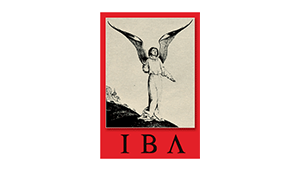
Simone Young has been Artistic Director of the Hamburg State Opera and Chief Music Director of the Hamburg Philharmonic since August 2005. She has conducted here a broad musical spectrum of premieres and repertoire performances ranging from Mozart, Verdi, Puccini, Wagner and Strauss to Hindemith, Britten and Henze. At the State Opera and with the Hamburg Philharmonic, she has been able to achieve great successes with world premieres and several German premieres. Simone Young has made an international name for herself as a Wagner conductor: she was music director of several complete cycles of the Ring of the Nibelung at the Vienna State Opera and the State Opera Unter den Linden in Berlin. She forged her own Ring with great success at the Hamburg State Opera, conducting the complete cycle here as well. Engagements led the Sydney-born conductor to all the leading opera houses of the world, including the Vienna State Opera, the Opéra National de Paris, the Royal Opera House Covent Garden in London, the Bavarian State Opera, the Metropolitan Opera in New York and the Los Angeles Opera. Alongside her extensive operatic activities, Simone Young has also made a name for herself on the concert podium. She has worked with all the leading orchestras, including the Vienna Philharmonic, the Berlin Philharmonic and the London Philharmonic Orchestra. Simone Young directed the Bergen Philharmonic Orchestra as Principal Conductor from 1999 until 2002 and was Artistic Director and Principal Conductor of the Australian Opera in Sydney and Melbourne from January 2001 until December 2003. From 2007 until 2013 she also was Principal Guest Conductor of the Lisbon Gulbenkian Orchestra.
Simone Young appears on numerous recordings. For example, alongside recordings from the Hamburg State Opera such as Mathis der Maler, Das Rheingold, Die Walküre, Siegfried and Götterdämmerung on OehmsClassics, there are also several recordings with the Hamburg Philharmonic. Among others, ten Bruckner symphonies have been issued as well as the Second and the Sixth Symphony of Gustav Mahler and the symphonies of Johannes Brahms.
Simone Young has received numerous prizes and awards. She is an honorary doctor of the Universities of Sydney and Melbourne, Professor at the Academy of Music and Theatre in Hamburg, a member of the Order of Australia and a “Chevalier des Arts et des Lettres” as well as a recipient of the Goethe Medal. She was honoured as “Conductor of the Year” for her first opera season in Hamburg, and also received the Schleswig-Holstein Brahms Prize. In 2009, together with the Hamburg Philharmonic, she made the Hanseatic City into the world’s largest concert hall – from the Michel Tower, she conducted 100 musicians at 50 locations throughout the city.
In 2012 Simone Young, the Hamburg Philharmonic and soloists of the Hamburg State Opera presented Wagner’s Das Rheingold and Mahler’s Second Symphony in Brisbane, Australia, for which Young received the Helpmann Award in the category of “Best Individual Classical Music Performance” in 2013.
Translation: David Babcock
RELATED ARTICLES:
Bruckner’s 200th anniversary: Interview with Simone Young on Symphony No. 6 (Gramophone)

Born at Kaliště in Bohemia, the son of a Jewish pedlar, Gustav Mahler later described himself as three times homeless: a Bohemian in Austria, an Austrian among Germans, and a Jew throughout the world – everywhere an intruder, never welcomed. His principal musical training was at the Vienna Conservatory, after which he embarked on a career as a conductor which took him to important positions in Budapest, Hamburg, and finally the Vienna Court Opera, where he made a number of major reforms. Hostility fomented by sections of the press forced his resignation in 1907, after which he briefly continued a distinguished international career as a conductor, notably in New York, until his death in 1911. As a composer Mahler wrote symphonies that absorbed into their texture and form the tradition of German song, the music reflecting the spirit of the time in which he lived, in all its variety.
Orchestral Music
Mahler completed nine symphonies (leaving a 10th unfinished) in addition to Das Lied von der Erde (‘The Song of the Earth’), a symphony in all but name which comprises settings of a series of poems from Bethge’s Die chinesische Flöte. The first of the symphonies, sometimes known as ‘Titan’, includes a remarkable ironic funeral march that transforms a nursery tune; Nos 2, 3, 4 and 8 make use of voices, the last of these on a massive scale. All the symphonies, in their variety of mood, offer a reflection of the world through music that may occasionally be garish and yet often reaches unsurpassable heights.
Vocal Music
In addition to the vocal element in his symphonies, Mahler wrote songs of singular beauty. They include settings of poems from the Romantic anthology Des Knaben Wunderhorn (‘The Boy’s Magic Horn’), Lieder eines fahrenden Gesellen (‘Songs of a Wayfarer’), and Rückert’s Kindertotenlieder (‘Songs of the Death of Children’).






























